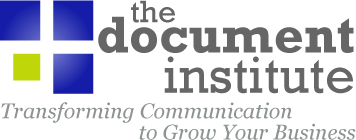Are you potentially wasting millions of dollars because the status quo seems good enough and you simply don't know what you don't know?
We educate senior management through to those on the shop floor about the Document Production Workflow and the Document Systems Lifecycle. These two timelines are central to establishing the most productive and most effective processes across your business when it comes to document-based communication, whether delivered by print and mail or electronically through digital channels.
The Document Production Workflow covers all facets of the MICRO timeline - often 12 to 48 hours - between data extraction and submission for postal or digital delviery. This covers the areas of:
- Preparation - understanding documents, data, document objects, and composition
- Processing - sorting, presentation stream creation, transformation, manipulation, and management
- Production - printing, inserting, archiving, and electronic presentment
- Delivery - covering both physical and digital delivery
Having a foundation of these Critical Functions is essential for any staff member, regardless of the main function of their direct responsibility, or even how long they have been performing the role. Our experience shows us that even experts are often siloed into their area of expertise and either aren't involved with or don't keep up-to-date with the requirements of the other functions. This often costs the business significant time and dollars when planning and communicating, both internally and externally.
The Document Systems Lifecycle looks at the MACRO timeline. This is typically a 3, 5, or even 10 year time frame, covering the complete lifecycle of a document:
- Business Phase - needs analysis, business/technical analysis, and solution architecture
- Development Phase - creation of specifications, development, QA & test, and launch into production
- Lean Production Phase - maintain, improve, and finally when time has come, decommission
...and then of course the cycle starts again.
Once the workflowand lifecycle are understood, it is important to understand Document Production Best Practices, including the appreciation of processes that might have once been best practices, but are now considered poor.
Please enquire here if you consider the above important for your business.
Below is a summary of our certified, assessed, and internationally endorsed courses/sessions. Click here for a summary of our Document Systems Industry Education sessions.
-
What Makes a Great Transaction Document?
-
Typography
-
Document Design
-
Understanding Colour
-
Document Production Workflow
-
Document Systems Lifecycle
-
Document Production Best Practices
Document Production Workflow
- Data
- Classifications of data
- Different data structures
- Data extraction and normalisation
- Document Objects
- Text, Fonts, Images, Graphics, and more
- Composition
- Composing data and document objects into documents ready for the recipient
- Conditional processing
- Emitting different presentation streams
- Interfacing with inserting and postal preparation systems
- Presentation Streams
- The major print and electronic streams
- Manipulation and Transformation
- Print (and Printer) Management
- Archiving & Electronic Presentation
- Steganography and Document Metadata
- Laser and Ink Jet Printing Technology
- Operational Environment
- Production printers and inserters require special environments
- Paper Specifications
- High volume production paper types
- Electrophotographic and ink jet paper
- Conditioning paper for production
- Inserting Technologies
- Sub-components of a production inserter
- Use of barcodes to manage the process
- Postal Preparation and Requirements
- Sorting, barcoding, and more
Document Systems Lifecycle
- Introduction to Life Cycle
- Business Phase
- Requirements gathering
- Technical & Business analysis
- Architecture
- Construction Phase
- Specifications
- Development
- Test and quality assurance
- Launch
- Lean Production Phase
- Maintenance
- Continuing Improvement
- Decommissioning
- Stakeholder management
Document Production Best Practices
- Nobody develops a process that is a poor practice, however over time things change and what was once best practice could now be a very poor practice.
- This 1-day course includes best, acceptable, and poor practices in:
- Document design and colour practices
- Data extraction and formats
- Object and Message Management
- Document composition
- Print streams, manipulation, and transforms
- Presentation management
- Archiving, viewing and electronic delivery
- Laser and Ink Jet Print technologies
- Inserting technologies
- Postal practices and standards
- Service levels


